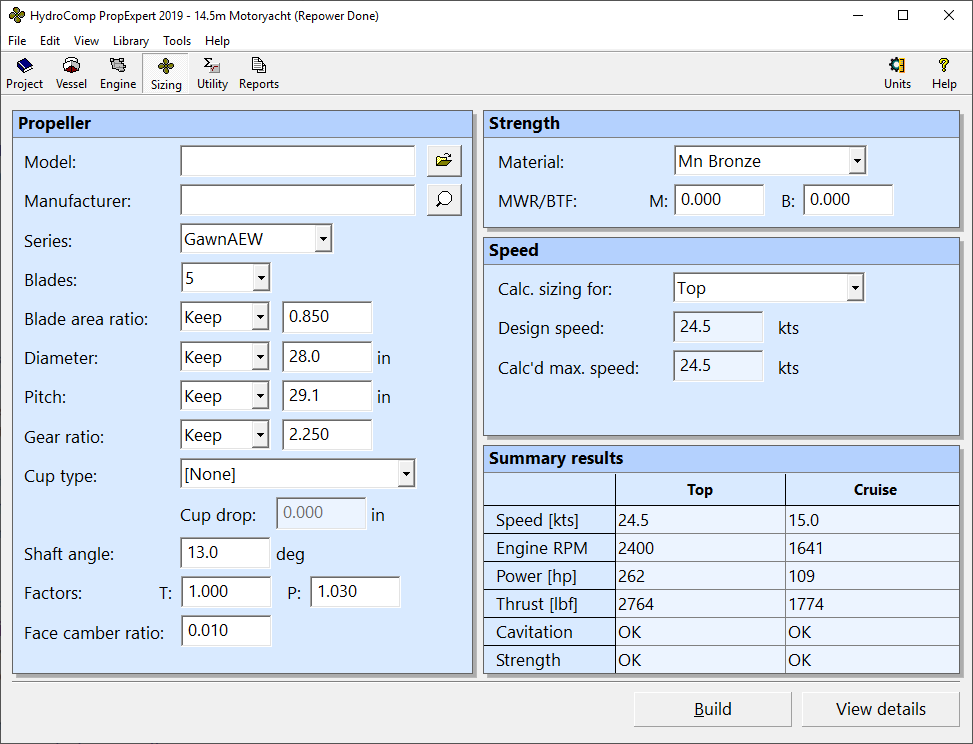The Leading Edge is a members-only publication from the National Marine Propeller Association. The NMPA is the largest professional society for propeller manufacturers, repair shops, and propulsion equipment vendors. HydroComp is proud to be a contributing member of the NMPA!
Durham, NH – Adam Kaplan, Program Manager – Propeller Tools, HydroComp Inc.
In our last article, we discussed the geometry of progressive pitch propellers and the differences between these new, contemporary propeller designs and the older, traditional designs. To quickly summarize, traditional designs used constant pitch from the root to the blade tip which resulted in many propellers with a flat face. If the propeller was a 20 inch wheel, then the pitch at every segment on the blade face was 20 inches. Contemporary designs have variation in pitch from the root to the tip (variable pitch distribution) and deviations in local pitch from the lead edge to the trailing edge (face-camber).
Repairing a contemporary design is more involved – and the same can be said about predicting performance. These propellers are notoriously difficult to predict and size. That old favorite “rule of thumb” regarding “an inch of pitch for X RPM” is especially unreliable here!
At HydroComp, we have purpose-built our PropExpert software for these type of sizing applications. Let’s take a look at the steps for representing a progressive pitch propeller in PropExpert…
Mean Effective Pitch
Since the propeller pitch varies at each radius from the root to the tip, what is the pitch of the propeller? The pitch stamped on the propeller is determined by the manufacturer and may not correlate well with the hydrodynamic performance of the wheel. Instead of using the stamped value, we measure the propeller and take an average of the pitch values. Our utility considers the chord length and the radius for each section in our integration – the utility is built into PropExpert!

Figure 1 – Calculation of the mean effective pitch and face camber ratio for a contemporary propeller.
Face-Camber Ratio (FCR):
For propellers with progressive pitch (leading edge to trailing edge), we must also compensate for the performance effects of the additional curvature in the face. The face curvature is known as face camber. We use a ratio of the face camber to the chord length, called FCR. FCR is calculated by measuring the depth of the face curvature and dividing by the chord length. For example, a face camber depth of 0.125 inches over a 10 inch chord length gives an FCR = 0.0125. The FCR can vary at each radius. Typical FCR values are between 0.01 to 0.03. The FCR ratio is averaged into a effective FCR for the propeller – again this calculation is fully integrated into PropExpert!

Figure 2 – Implementation of performance calculation with mean effective pitch and face-camber ratio. This is the field on the bottom left (face camber ratio).
Predicting Performance
Using the calculated the mean effective pitch and the face-camber ratio, we can make very accurate performance predictions for contemporary propellers! In HydroComp PropExpert, the effect of the FCR is very similar to the effect of cup!
Download the full article in The Leading Edge, an NMPA Publication.
Download the full article here.
Posted with the permission of the National Marine Propeller Association.

